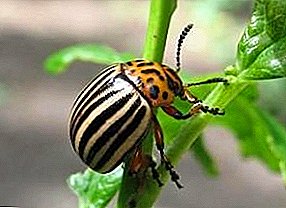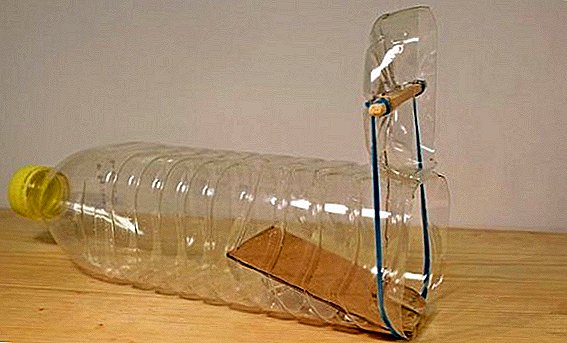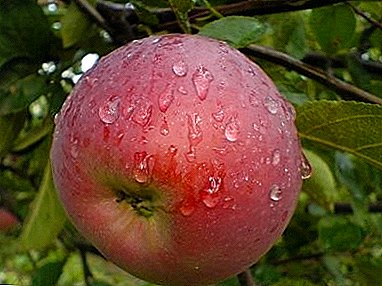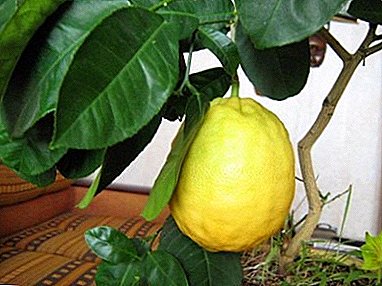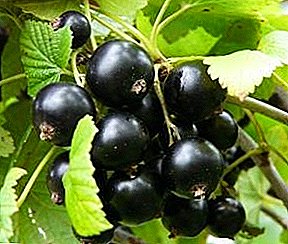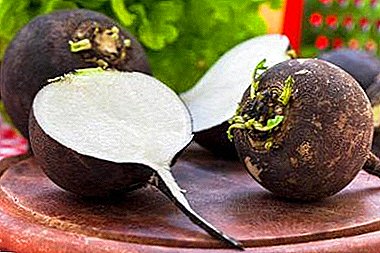
Black radish is a unique vegetable that possesses powerful healing properties and savory taste.
In Russia, it has been known since the 12th century; therefore, considerable experience has been accumulated in our latitudes in growing this culture.
Despite the fact that at present this vegetable has slightly lost its popularity, the number of true connoisseurs of its useful qualities is constantly growing. Following the simple rules, it is possible to grow black radish in the summer cottage without any problems.
Features of the cultivation of this culture
- It is recommended to change the landing site annually, while taking into account the predecessor. Radish belongs to the cruciferous family, its closest relatives - cabbage, radish, turnip, and, therefore, they have common pests. Therefore, such predecessors are a bad option; it is better to plant radish after representatives of other families:
- Potatoes.
- Tomatoes.
- Bow.
- Garlic.
- Pumpkin and others.
- In the process of growing it is recommended to slightly rock the roots to get rid of the side roots and to provide the best nutrition and growth of the main root, then the radish will turn out juicy and large.
- Radish has a tendency to the formation of arrows, which adversely affects the quality of the roots. To avoid this, you need to monitor the soil moisture, preventing drying and thinning too thick in time.
Nuances of agrotechnology depending on the climatic zone
 Radish is cold-resistant and adult plants are able to tolerate even frosts down to -6 ° C. But despite this, growing it in different climatic zones has its own characteristics. This is mainly due to the time of sowing and harvesting of different varieties of radish. They are:
Radish is cold-resistant and adult plants are able to tolerate even frosts down to -6 ° C. But despite this, growing it in different climatic zones has its own characteristics. This is mainly due to the time of sowing and harvesting of different varieties of radish. They are:
- Small early varieties (planting time is March, but in central Russia, and even more so in Siberia, this is not feasible, therefore planting is possible in August, ripening period is 40-50 days).
- Early Varieties (planting time - April-May, in Siberia - not earlier than the first decade of May, when the soil warms up sufficiently, the ripening period is 60-70 days);
- Mid-season and late winter varieties (sowing time for the Moscow region and central Russia is mid-end of July, for Siberia - the third decade of June, the ripening period is 100-115 days).
Variety selection
| Grade name | Characteristic, description |
| Winter round black | This variety is the most famous, time of ripening 110-120 days, white flesh, skin with furrows |
| Winter long black | Large fruits, grow to 400g, well stored |
| Doctor | Fruit weight up to 250 g, the pulp has excellent taste, long stored |
| Wonderful | Root weight about 350 g, afraid of frost |
| Gaivoronskaya | Unpretentious variety, the fruits are elongated, well stored |
| Murzilka | Late variety, round-shaped roots, juicy, weighing up to 300g, can be safely stored until April. |
| Night | The variety is mid-season, about 75 days are needed for ripening round-shaped root crops, weighing about 200g, with a sharp-sweet taste |
| Cylinder | Middle-ripe variety, elongated small roots, excellent for salads |
| Black woman | Late variety, for storage in winter, fruits about 260g, white and juicy flesh |
| Chernomorochka | New variety, mid-season and high-yielding, root crops reach a weight of 55g, juicy flesh, suitable for salads and other dishes |
There are a lot of varieties of black radish, it is important to determine which qualities are of priority to you. And you can order the seeds in the online store with delivery, which is very convenient and easy. The average price (Moscow, St. Petersburg) is 100-200 rubles. for 1g.
How to grow in open ground?
Bezrassadno
 Preparing the landing site. It is necessary to prepare a bed, and to do it in the autumn. The site for planting is chosen well lit, the ground must be fertile and loose, so they dig up a bed, get rid of plant debris, and if necessary add organic fertilizer.
Preparing the landing site. It is necessary to prepare a bed, and to do it in the autumn. The site for planting is chosen well lit, the ground must be fertile and loose, so they dig up a bed, get rid of plant debris, and if necessary add organic fertilizer.The radish does not tolerate organics, so in the spring before planting only mineral fertilizers can be applied and then in a small amount, otherwise the roots will crack and, therefore, poorly stored.
- Preparation of planting material. Standard procedures are carried out: selection, calibration and dressing.
- Seeds are immersed in a saline solution (50 g of salt per 1 liter of water), the surfaced ones are removed.
- Then sift them through a sieve (holes - 2 mm), high-quality planting material should remain in the sieve. It is soaked for a day in a solution of potassium permanganate (0.3 g / 1 l of water).
- Then dried, after which you can begin to sow.
- Sowing. The soil is once again loosened, sprayed with wood ash, which well deters the cruciferous flea. Of mineral fertilizers, it is recommended to apply nitroammofosk or azofosc at the rate of about 15 g per 1 m2.
- Seeds are planted in grooves with a depth of 2-4 cm, the distance between which is 30-40 cm.
- Then sprinkled with soil, slightly thickening, and watered.
Attention! Be sure to observe the planting dates in accordance with the selected grade to avoid marksmanship.
- Care. It includes the following activities:
- Watering is regular, the soil must be wet, in no case should be allowed to dry.
- Weeding - weeds need to be removed in a timely manner, additionally loosening the soil.
- Thinning is a mandatory step for the normal growth of root crops:
- The first time - when only 2-3 leaves appear.
- The second - in about 2 weeks.
As a result, the distance between the plants should be about 8-10 cm, and it is also not worth increasing it, otherwise the root crop will begin to grow, which will worsen its taste.
- Hilling has a positive effect on plant growth and development.
- Mulching (laying on the soil surface of a protective layer) is used to keep the soil moist and protect against weeds. Straw, sawdust, bark, etc. are used as mulch.
- Fertilizing produce at least 2 times during the season:
- The first nitrogen supplement - when there will be 3-4 leaves.
- A month later - the second.
- Pest control.
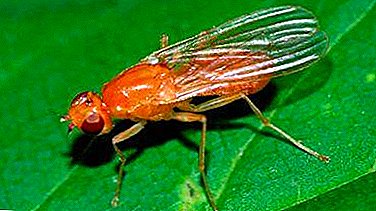 Cruciflo flea and carrot fly can spoil the root, and through the damaged peel from the soil into the interior penetrate bacteria and fungal spores. Such a vegetable will not be stored. An effective method of control is the repeated spraying of wood ash (in the process of preparing the soil, sowing and growing plants).
Cruciflo flea and carrot fly can spoil the root, and through the damaged peel from the soil into the interior penetrate bacteria and fungal spores. Such a vegetable will not be stored. An effective method of control is the repeated spraying of wood ash (in the process of preparing the soil, sowing and growing plants).- Slugs, aphid, rapeseed and cabbage leaf beetles can destroy terrestrial parts of plants. There are biological products and enzymes (for example, Lipocide) that help fight pests, while safe and do not affect the quality of the fruit.
Rassadno
This method differs only in the fact that seedlings are used as seedlings, which you can grow yourself, or you can buy them, for example, in the online store. However, the probability of damage to the tip of the root during transplantation is too great, and this can be immediately overlooked, but subsequently a wrong formation of the root crop (by the crown) will occur. therefore rassadny sowing method of radish is rarely used.
Diseases and pests
Radish has enough enemies:
Harvesting and storage
Observing all the recommendations, it is not difficult to grow a crop, but in order to preserve it and to fully utilize all the useful properties, it is very important to properly organize the cleaning of radish. Early varieties grow to the end of May and are ready to eat. They are stored simply in the refrigerator. Mid-season varieties clean in late summer - early autumn and stored in sandboxes in the basement.
The most responsible is the harvesting of winter varieties, because it is very important that they remain juicy as long as possible, preferably until spring. It is necessary to wait for the full ripening of the roots, then they are better stored, but also to prevent exposure to negative temperatures, which also affects the keeping quality of vegetables. The end of October and the beginning of November is the best time for cleaning.
Radish is stored in the basement in boxes (or bags) with wet sand at a temperature of about + 3 ° C. At the same time, you regularly need to check stocks and remove rotted specimens.
Independent cultivation of black radish on a plot in an open field is a laborious task, but quite feasible. All the difficulties that may arise in the process are solved in quite affordable ways. Therefore, you can confidently get down to business.


 Preparing the landing site. It is necessary to prepare a bed, and to do it in the autumn. The site for planting is chosen well lit, the ground must be fertile and loose, so they dig up a bed, get rid of plant debris, and if necessary add organic fertilizer.
Preparing the landing site. It is necessary to prepare a bed, and to do it in the autumn. The site for planting is chosen well lit, the ground must be fertile and loose, so they dig up a bed, get rid of plant debris, and if necessary add organic fertilizer. Cruciflo flea and carrot fly can spoil the root, and through the damaged peel from the soil into the interior penetrate bacteria and fungal spores. Such a vegetable will not be stored. An effective method of control is the repeated spraying of wood ash (in the process of preparing the soil, sowing and growing plants).
Cruciflo flea and carrot fly can spoil the root, and through the damaged peel from the soil into the interior penetrate bacteria and fungal spores. Such a vegetable will not be stored. An effective method of control is the repeated spraying of wood ash (in the process of preparing the soil, sowing and growing plants).